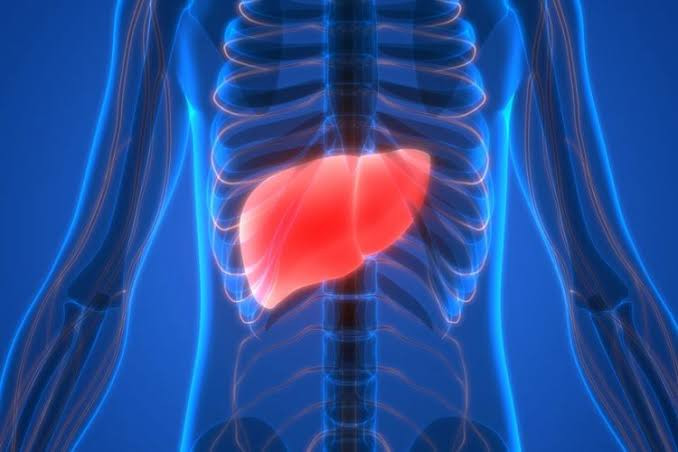Definition
Hepatitis A is a liver infection caused by the hepatitis A virus (HAV). The virus spreads through contaminated food or drink, direct contact with an infected person, or contact with contaminated objects. Mild cases of hepatitis A typically do not require specific treatment, and the majority of those infected recover fully without experiencing permanent liver damage.
The incidence of hepatitis A has decreased by 90% to 1.2 cases per 100,000 population, a reduction attributed to the introduction of vaccination in 1999. According to a 2016 estimate by the World Health Organization (WHO), approximately 7,134 people died due to hepatitis A, accounting for a mortality rate of around 0.5%. Indonesia is classified as an intermediate HAV endemic country, where typical transmission occurs through person-to-person contact, contaminated food and drinks, or through Kejadian Luar Biasa (KLB), signifying an unexpected surge in incidences beyond normal predictions.
Causes
The Hepatitis A virus (HAV) is a liver-infecting virus that causes inflammation, affecting the liver's functionality and leading to symptoms. The primary mode of transmission is through consuming contaminated food or drinks, with the virus not spreading through the air via coughing or sneezing. HAV can be transmitted in several ways:
- Consumption of virus-contaminated food or drinks (fecal-oral route): This occurs when food or drinks become contaminated with the fecal matter of individuals infected with HAV. Contamination may arise from inadequate hand hygiene during food preparation or incorrect food and drink handling.
- Consumption of raw clams or oysters
- Direct contact, including sexual contact (anal-oral): Transmission can occur through direct contact, even when the infected individual does not display symptoms.
The incubation period of HAV is typically 14-28 days, but it can extend to 50 days. The virus targets the liver, initiating inflammation. Within liver cells, the virus undergoes replication. The immune system plays a crucial role in controlling the infection by eliminating infected cells. The virus is expelled with bile, which can discolor feces.
Notably, the infected individual experiences the highest concentration of the virus approximately two weeks before the onset of jaundice symptoms. After the appearance of symptoms, the person is no longer infectious, and the virus ceases to spread within a week.
Risk factor
The following factors can increase the risk of Hepatitis A:
- Work, residence, or travel to endemic areas (Africa, South America, and Asia such as China, India, or Vietnam).
- Living in areas with low sanitation.
- Residing in crowded areas.
- Close contact with an infected individual.
- Sexual contact with an infected individual.
- Same-sex sexual activity
- HIV infection which weakens the immune system.
- Illegal drug consumption, especially via needle use.
Symptoms
The symptoms of hepatitis A typically manifest several weeks after exposure, and not all infected individuals show signs of illness. Adults are more likely than children to exhibit symptoms, with the elderly experiencing more severe manifestations. Below is a list of symptoms that may appear in those infected:
- Weakness
- Nausea and vomiting
- Yellowing of the skin and sclera (jaundice)
- Abdominal discomfort and pain, particularly in the upper right area
- Pale-colored feces
- Reduced appetite
- Fever
- Dark urine
- Joint pain
- Skin itchiness
The symptoms are usually mild and tend to disappear after a few weeks. However, in severe cases, the infection can persist for several months.
Diagnosis
The doctor will inquire about your symptoms, travel history, consumption of raw or potentially contaminated food and drinks, as well as your hepatitis A vaccination history. If you have any pre-existing liver-related medical conditions, it's essential to inform the doctor. Physical examinations, including an assessment of skin and sclera color, will be conducted.
Laboratory examinations are crucial for confirming the diagnosis of hepatitis A. A specific antibody test for HAV (IgM) is performed to detect evidence of virus infection. Additionally, testing for IgG (immunoglobulin G) anti-HAV can be conducted; this antibody appears after infection and remains detectable throughout life. Liver enzymes are also checked to assess potential liver damage. In infected individuals, an increase in alkaline phosphatase (ALP) and bilirubin levels may be observed, with improvements typically seen 1-6 weeks after the onset of symptoms.
Management
There are no specific drugs designed to treat hepatitis A, as the body typically resolves the infection on its own. In most cases, hepatitis A is completely cured within six months without further complications. The primary focus of treatment is to make the individual comfortable and reduce symptoms. Here are some measures that can be taken:
- Ensure you have an adequate amount of sleep: The infection may cause weakness and fatigue; getting sufficient rest is crucial.
- Nausea management: Nausea may make eating challenging. Consume small amounts of food more frequently to alleviate nausea. Opt for high-calorie foods to maintain adequate calorie intake.
- Avoid alcohol and drugs: The liver may struggle to process drugs and alcohol during infection. It is advisable to refrain from consuming these substances. Consult your doctor for guidance on medications metabolized in the liver.
To reduce the risk of spreading the infection:
- Avoid sexual contact: Hepatitis A can be transmitted through sexual activity. Condoms may not provide sufficient protection.
- Practice good hygiene: Wash hands thoroughly after using the toilet.
- Avoid preparing food for others while infected: This precaution helps prevent the spread of the virus to others.
Complications
Unlike other forms of hepatitis, hepatitis A typically does not result in long-term damage to the liver or lead to chronic infection. In rare cases, however, hepatitis A can cause sudden and severe damage to overall liver function, particularly in the elderly and those with chronic liver disease. Although uncommon, there is a potential for hepatitis A to progress to fulminant hepatitis, a condition characterized by the massive death of liver cells, ultimately causing acute liver failure.
Prevention
The prevention of hepatitis A involves several key measures:
- Taking care of personal hygiene:
- Wash hands before and after eating, preparing food, and after using the toilet. Follow the WHO-recommended six steps for proper handwashing.
- Use gloves and masks when handling vomit or feces; wash hands thoroughly afterward.
- Use clean chopsticks or spoons for eating.
- Avoid going to work or gathering with others if experiencing symptoms such as diarrhea or vomiting.
- Taking care of living area hygiene:
- Maintain kitchen and utensil hygiene.
- Disinfect frequently touched surfaces using a solution made with diluted bleach (1 part 5.25% bleach and 99 parts water). Allow it to sit for 15-30 minutes, then wash and dry. For metal surfaces, use alcohol-based disinfectants.
- Food hygiene with the 5 keys of food safety: choose safe raw materials, keep hands and utensils clean, separate cooked and raw food, cook food thoroughly, and store food at safe temperatures. Consume boiled water or water from a trusted source. Avoid consuming water ice if the source is unknown.
- Hepatitis A vaccination is recommended for high-risk individuals, including:
- Those traveling to endemic HAV areas.
- Individuals with blood clotting disorders.
- Those with chronic liver disease.
- Men engaged in same-gender sexual activity.
When to see a doctor?
Check yourself for signs and symptoms of hepatitis A. If you've been exposed to hepatitis A, getting vaccinated or receiving an immunoglobulin injection within two weeks can protect against infection.
- dr Hanifa Rahma
Iorio N, John S. Hepatitis A. [Updated 2021 Jul 19]. In: StatPearls [Internet]. Treasure Island (FL): StatPearls Publishing; 2021 Jan-. Available from: https://www.ncbi.nlm.nih.gov/books/NBK459290/
World Health Organization (2021). Hepatitis A. Available from: https://www.who.int/news-room/fact-sheets/detail/hepatitis-a
Centers for Disease Control and Prevention (2020). Viral Hepatitis. Available from: https://www.cdc.gov/hepatitis/hav/afaq.htm
Centre for Health Protection, Department of Health, The Government of Hong Kong Special Administrative Region (2019). Hepatitis A. Available from: https://www.chp.gov.hk/en/healthtopics/content/24/24.html
Mayo Clinic Staff (2020). Hepatitis A. Available from: https://www.mayoclinic.org/diseases-conditions/hepatitis-a/diagnosis-treatment/drc-20367055






/6302128dc2a2c.jpg)





